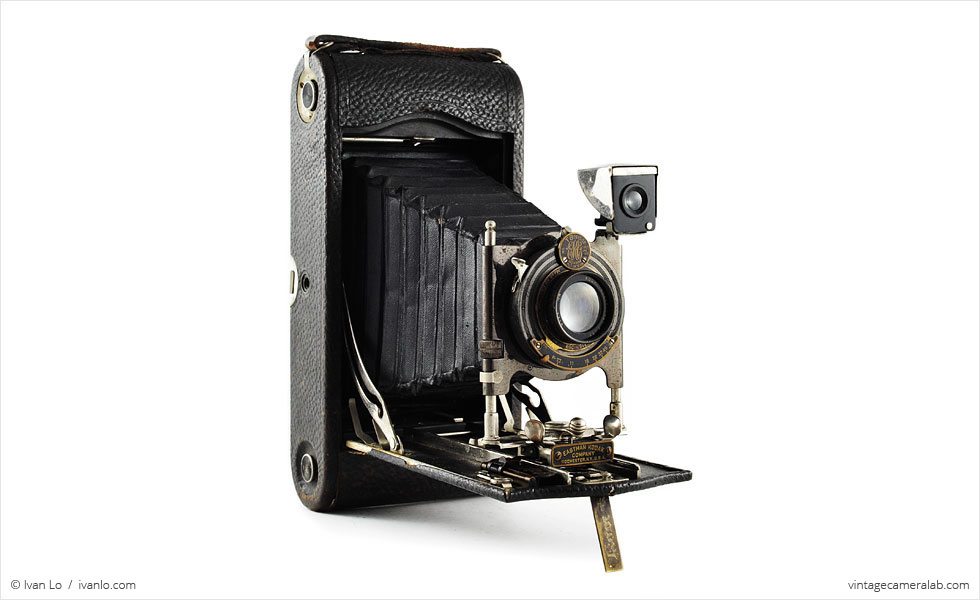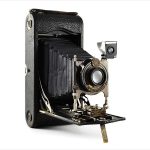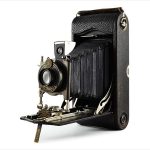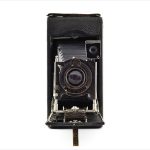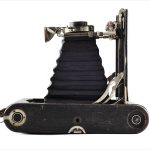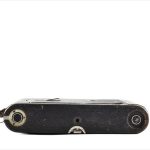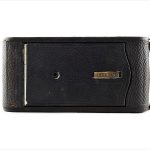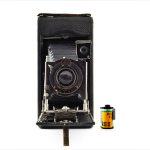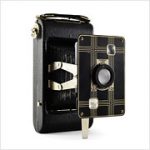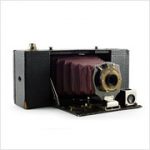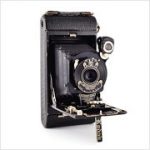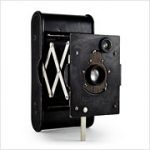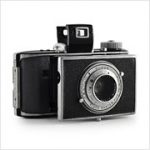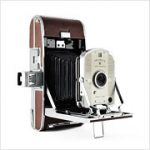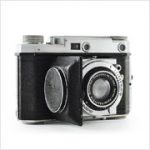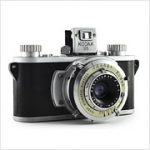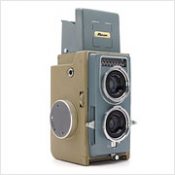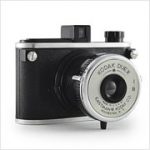Kodak No. 3A Autographic Specifications
| Manufacturer: | Eastman Kodak Company |
| Origin: | USA |
| Made in: | Rochester, NY, USA |
| Introduced: | 1914 |
| Type: | Folding, Viewfinder |
| Format: | 122 Film (autographic) |
| Dimensions: | 12 x 24 x 5 cm (closed) |
| 12 x 24 x 20.5 cm (open) |
Kodak No. 3A Autographic Overview
The Kodak No. 3A Autographic is one of Kodak’s early folding cameras and was designed to take a variant of 122 format film, commonly known as the postcard format. The specific variant in question is 122 autographic which allows you to use the camera’s metal stylus (seen here held by a metal clip onto the back of the camera) to record information about the photograph you just took by opening the long window underneath the stylus holder on the rear panel of the camera and writing directly onto the margin of the negative via carbon transfer paper. However, since autographic 122 seems to be nearly impossible to find these days, regular 122 film also works.
Like most early Kodak folding cameras, the lens on the 3A is quite modest: a simple anastigmat with a maximum aperture of f/7.7 and a minimum focus distance of six feet. Coupled to the lens is a homegrown ball bearing shutter with five different speeds: Time, Bulb, 1/25, 1/50, and 1/100 seconds. Once you unfold the camera by finding and pressing the hidden button located on the handle side of the bottom plate, the 3A is fairly simple to operate. You compose by using the right-angle viewfinder above the lens, focus using the scale on the front panel and fire the shutter by pressing the lever at the lens barrel’s 10 o’clock position or with a cable release via the socket just behind it.
A very thoughtful friend in St. Louis found this beastly Kodak down there at a flea market and bought it for me as a wedding gift (thanks, Steve!). It may not look like it from the pictures above, but this thing is surprisingly big and is one of the largest, heaviest, and oldest cameras in my entire collection. Speaking of ‘old,’ this particular Kodak No. 3A Autographic is in rather good condition with only a few small scuffs, some oxidation, and minor leatherette deterioration to betray its age.
Find your very own Kodak No. 3A Autographic on eBay.
McKeown, James M. and Joan C. McKeown’s Price Guide to Antique and Classic Cameras, 2001-2002. (Grantsburg, WI, USA: Centennial Photo Service, 2001), p 321.

